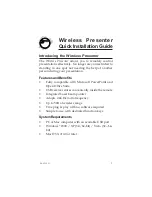
230
General Live View Shooting Cautions
Image Quality
When you shoot at high ISO speeds, noise (such as dots of light and
banding) may become noticeable.
Shooting in high temperatures may cause noise and irregular colors in
the image.
If Live View shooting is used continuously for a prolonged period, the
camera’s internal temperature may rise, and image quality may
deteriorate. Always exit Live View shooting when you are not shooting.
If you shoot a long exposure while the camera’s internal temperature is
high, image quality may deteriorate. Exit Live View shooting and wait a
few minutes before shooting again.
White <
s
> and Red <
E
> Internal Temperature Warning Icons
If the camera’s internal temperature increases due to prolonged Live
View shooting or under a high ambient temperature, a white <
s
> or red
<
E
> icon will appear.
The white <
s
> icon indicates that the image quality of still photos will
deteriorate. It is recommended that you temporarily exit Live View
shooting and allow the camera to cool down before shooting again.
The red <
E
> icon indicates that the Live View shooting will soon stop
automatically. If this happens, you will not be able to shoot again until the
camera’s internal temperature decreases. Temporarily exit the Live View
shooting or turn off the power and let the camera rest for a while.
Using Live View shooting at a high temperature for a prolonged period
will cause the <
s
> or <
E
> icon to appear earlier. When you are not
shooting, always turn off the camera.
If the camera’s internal temperature is high, the quality of images shot
with a high ISO speed or long exposure may deteriorate even before the
white <
s
> icon is displayed.
Shooting Results
If you take the picture in magnified view, the exposure may not come out
as desired. Return to the normal view before taking the picture. In
magnified view, the shutter speed and aperture will be displayed in
orange. Even if you take the picture in magnified view, the image will be
captured with the image area of the normal view.
If you use a TS-E lens (except the TS-E17mm f/4L or TS-E24mm f/3.5L
II) for shifting or tilting the lens or if you use an extension tube, the
standard exposure may not be obtained, or an irregular exposure may
result.
Summary of Contents for EOS Rebel SL2 EOS 200D
Page 112: ...112 ...
Page 160: ...160 ...
Page 232: ...232 ...
Page 280: ...280 ...
Page 308: ...308 ...
Page 354: ...354 ...
Page 378: ...378 ...
Page 457: ......
















































